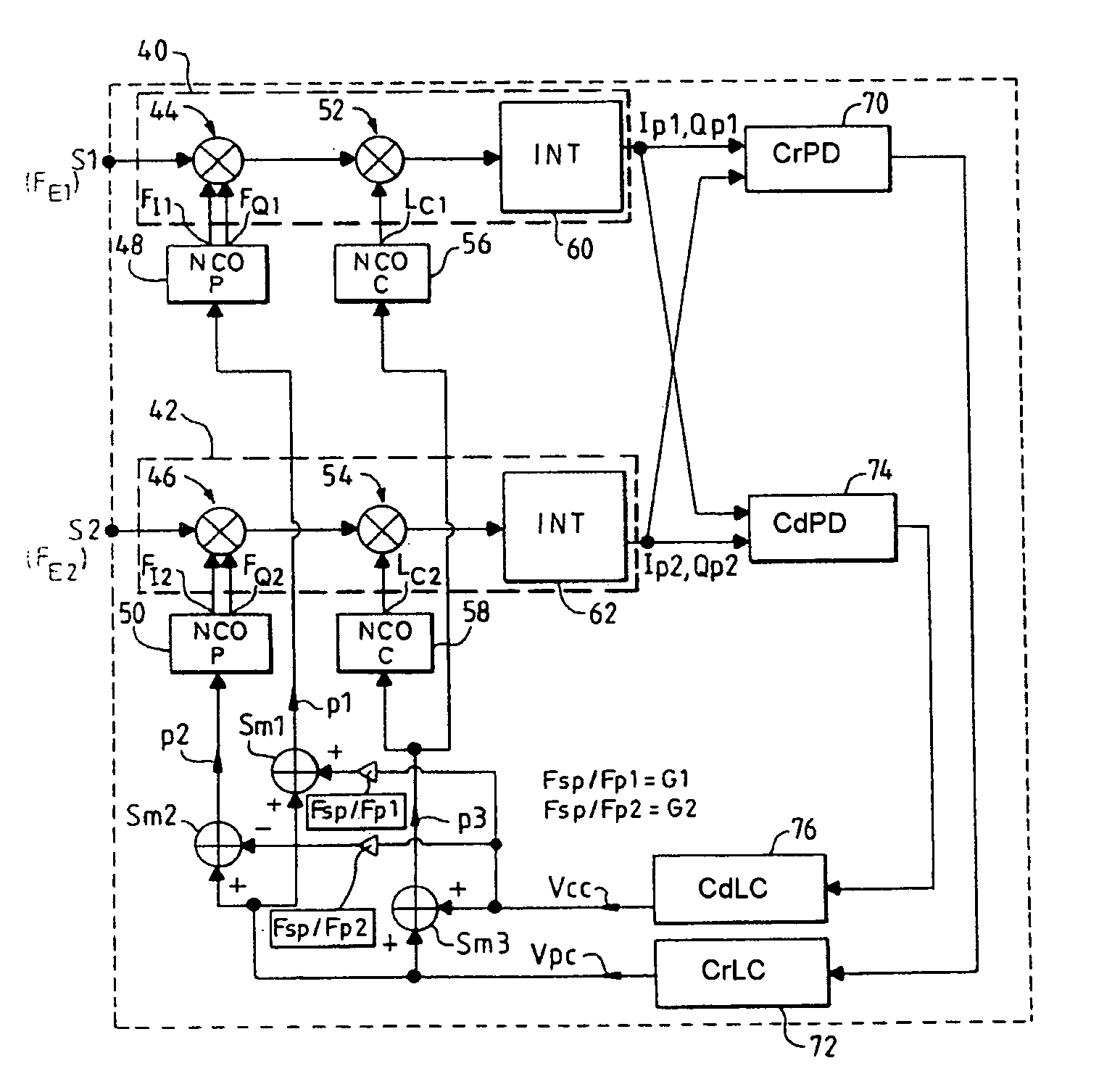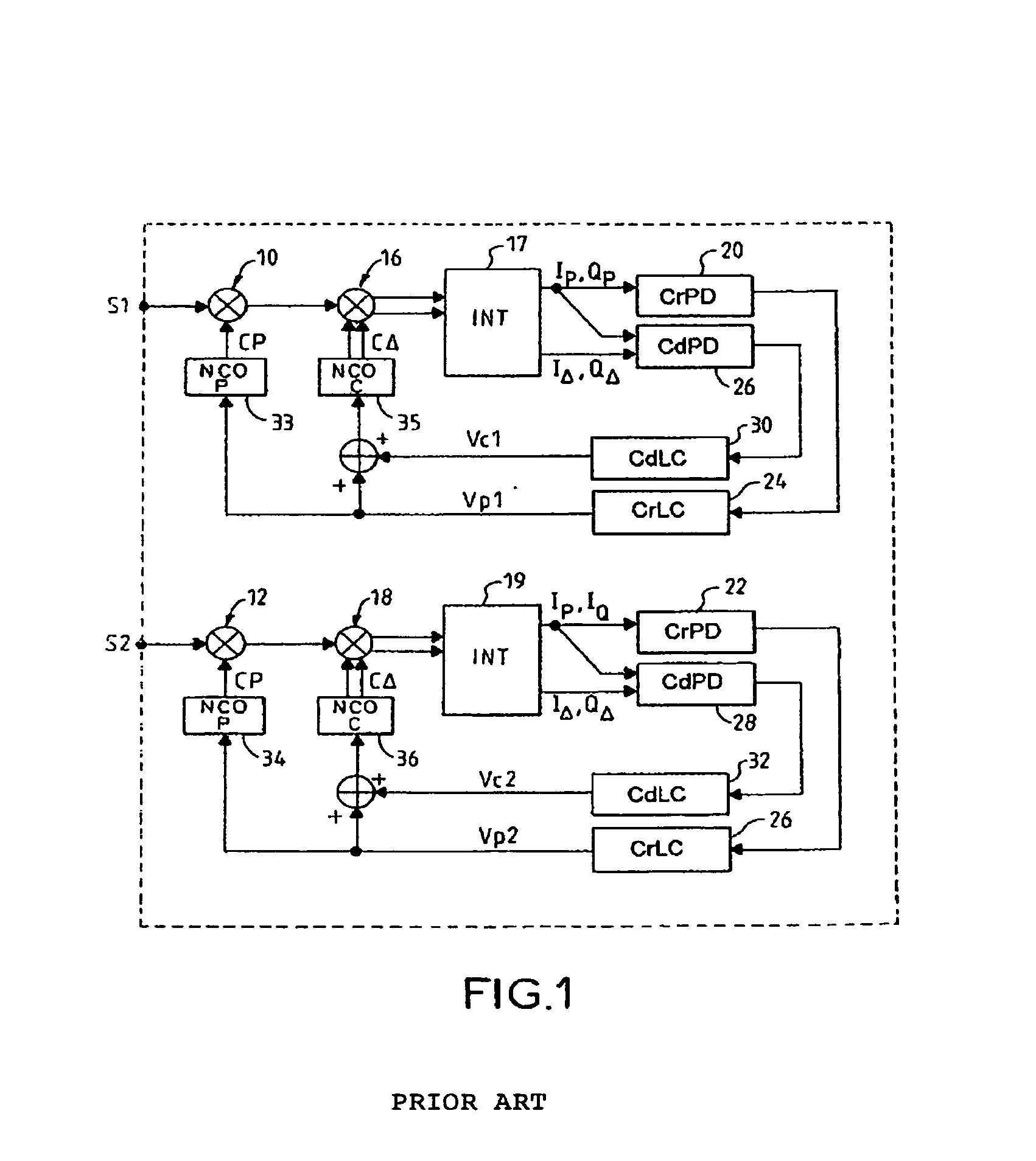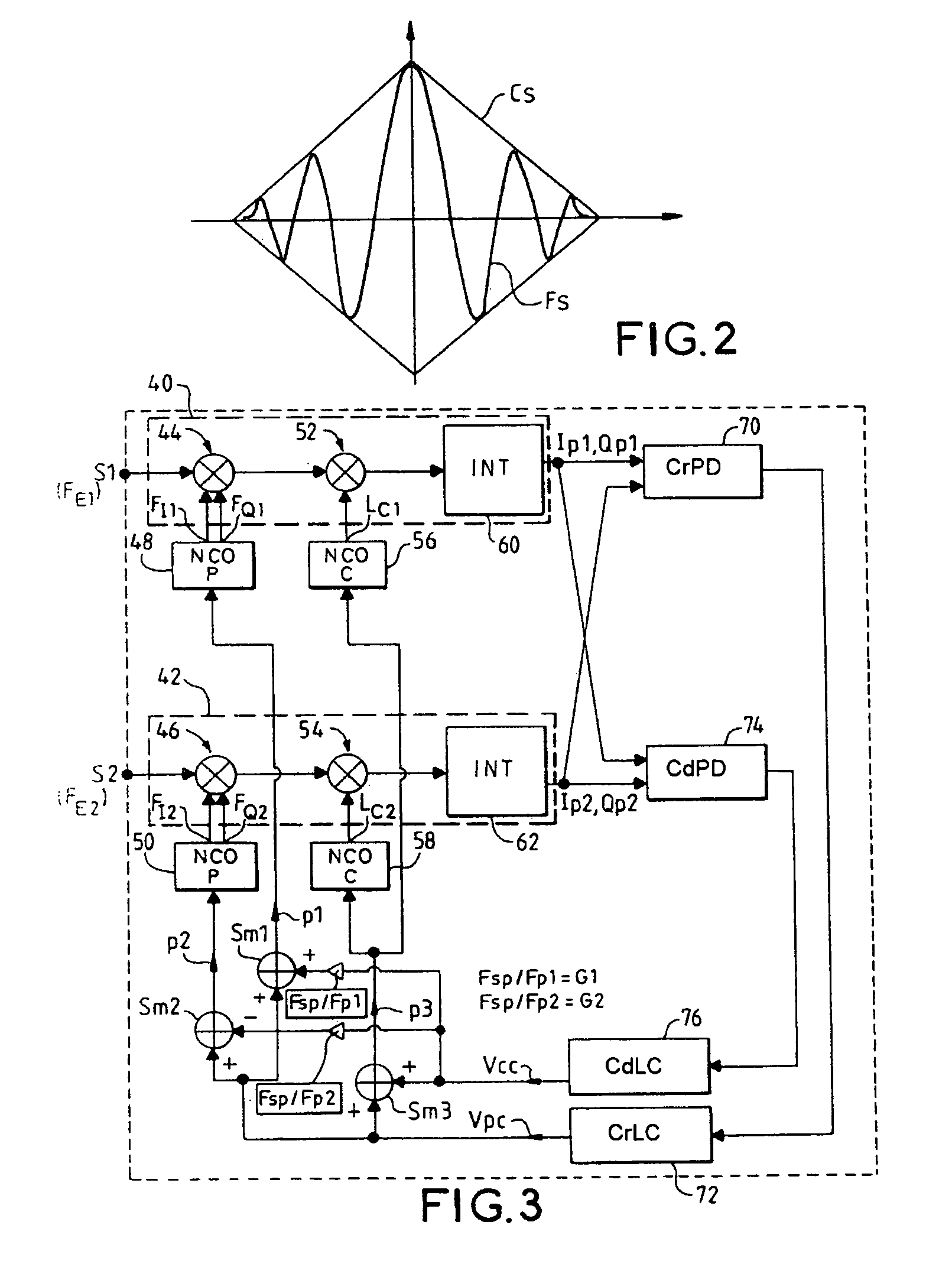Satellite positioning receiver using two signal carriers
a satellite positioning and receiver technology, applied in the field of satellite positioning receivers using two signal carriers, can solve the problems of not being able to retain phase measurement precision, buried signals are not freely available to users, and reach the receivers with very low power levels, etc., to achieve the effect of improving the accuracy of pseudo-distance measurement and larger equivalent frequency bandwidth
- Summary
- Abstract
- Description
- Claims
- Application Information
AI Technical Summary
Benefits of technology
Problems solved by technology
Method used
Image
Examples
Embodiment Construction
[0052]FIG. 3 shows a block diagram of a receiver according to the invention. In this embodiment shown in FIG. 3 the subcarrier loop or code loop is assisted by the central carrier loop.
[0053]The receiver shown in FIG. 3 includes a first correlator circuit 40 into which a first received signal S1 at a frequency FE1 is delivered and a second correlator circuit 42 into which the second received signal S2 at a frequency FE2 is delivered.
[0054]Each correlator circuit comprises a correlation channel 44, 46 for in-phase and quadrature correlation between its respective received signal S1, S2 and two respective local carriers FI1, FQ1 in the case of the first correlation channel 44 and FI2, FQ2 in the case of the second correlation channel 46, these local quadrature carriers being generated by a respective carrier numerically controlled oscillator 48, 50.
[0055]The signals I1, Q1 and I2, Q2 output by the carrier phase correlation channels are then correlated in a respective code correlation ...
PUM
 Login to View More
Login to View More Abstract
Description
Claims
Application Information
 Login to View More
Login to View More - R&D
- Intellectual Property
- Life Sciences
- Materials
- Tech Scout
- Unparalleled Data Quality
- Higher Quality Content
- 60% Fewer Hallucinations
Browse by: Latest US Patents, China's latest patents, Technical Efficacy Thesaurus, Application Domain, Technology Topic, Popular Technical Reports.
© 2025 PatSnap. All rights reserved.Legal|Privacy policy|Modern Slavery Act Transparency Statement|Sitemap|About US| Contact US: help@patsnap.com



